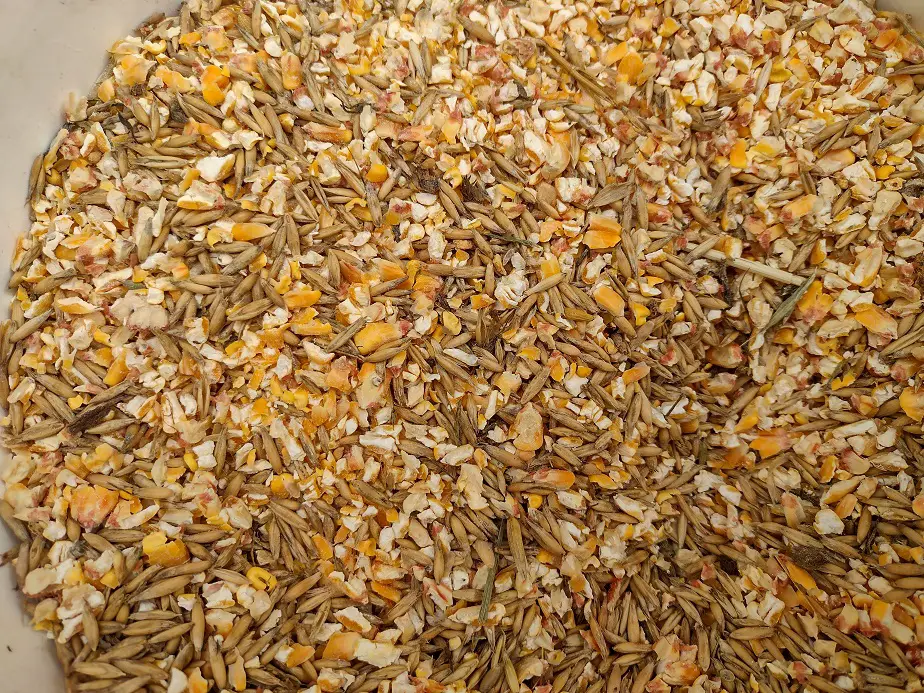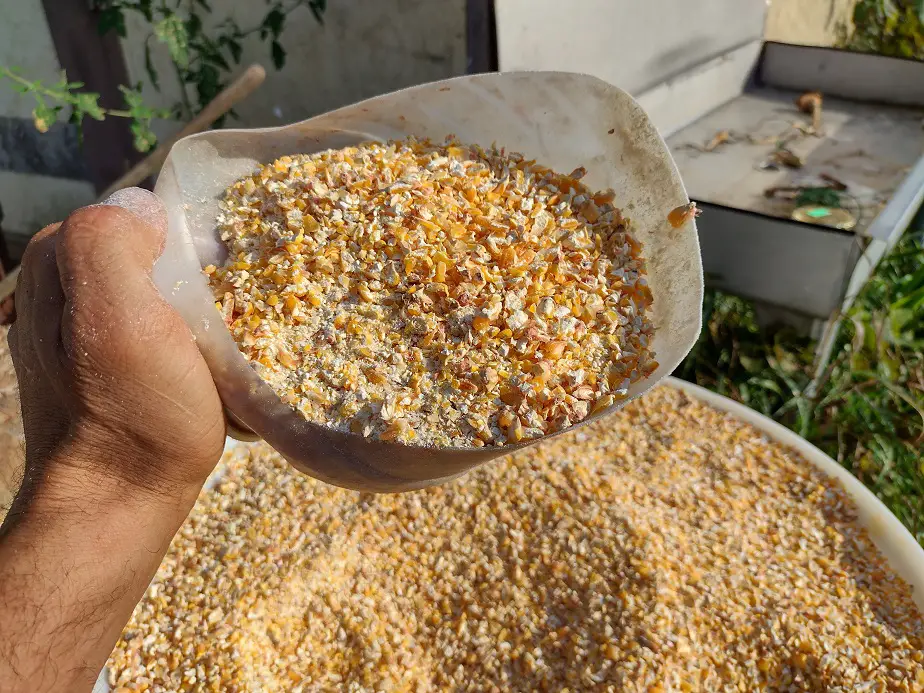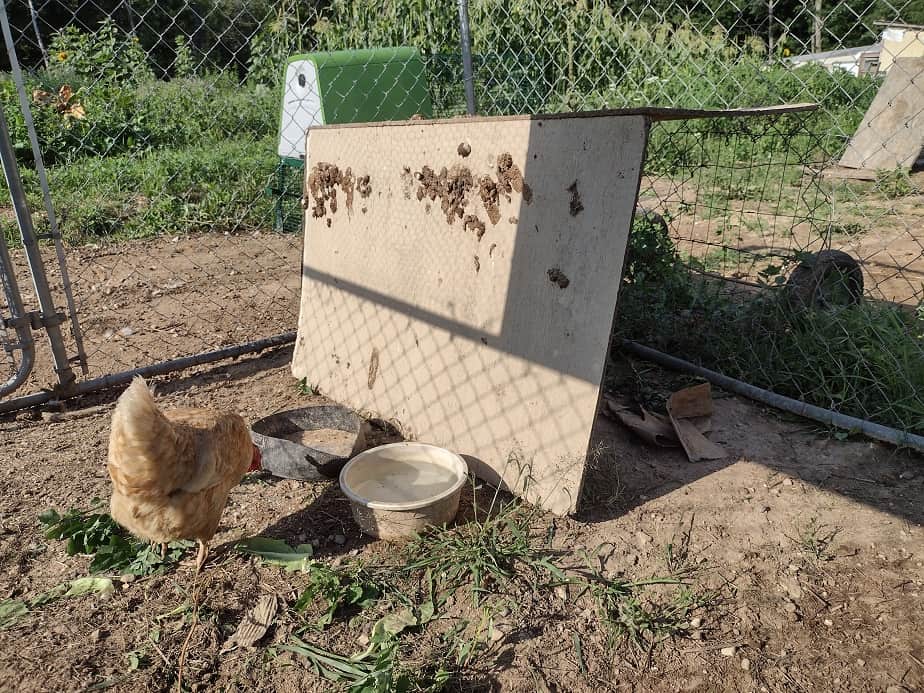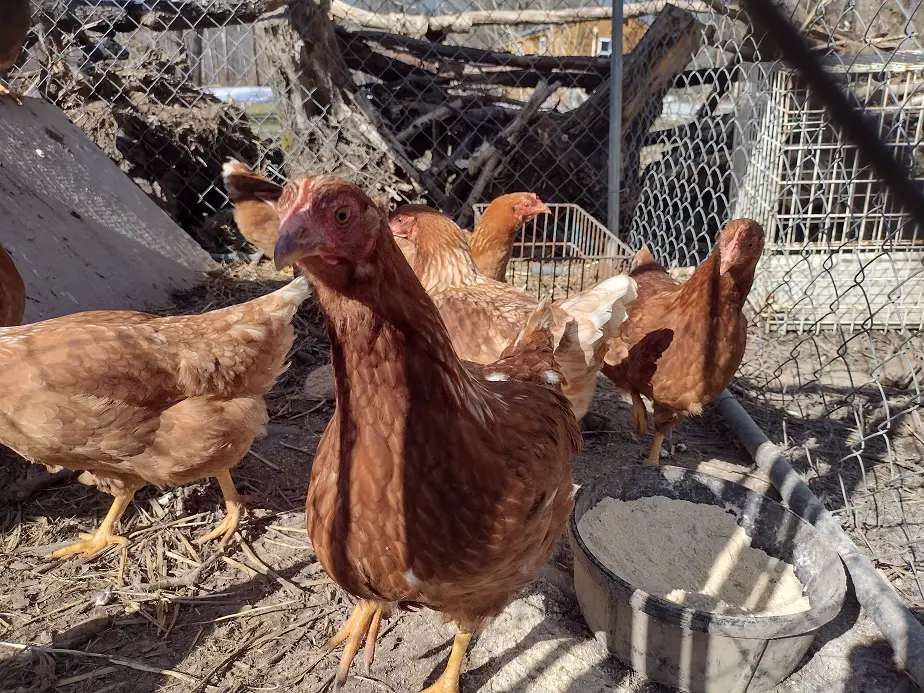I’ve had chickens now for quite a few years and have tried all the feed options.
Scratch is contains both cheap and more expensive grains, and has more protein for chickens. Cracked corn is usually the cheapest grain, has around 7 percent protein, and is 25 percent cheaper than low-end scratch. Scratch is almost the same cost as chicken feed, and cracked corn is a bit cheaper.
Which one should you buy? Should you buy either?
Is scratch Grain Better than Cracked Corn?
Scratch grain has a lot more ingredients in it than cracked corn, which is just corn. Scratch usually has cracked corn in it as a base. It’s usually around 50-80 percent corn. The exact ingredients vary from region to region, but it’s usually mostly corn. Then again, so is chicken feed.
Let’s look at the nutritional labels of a few examples
- Producer’s Pride Scratch
- Crude protein minuimum- 8%
- Crude fat minimum- 2%
- Crude fiber max- 2%
- Calcium minimum- 0.01%
- Calcium max- 0.51%
- Phosphorus- 0.2% minimum
- Producer’s Pride Cracked Corn
- Crude protein minimum- 6%
- Crude fat minumum- 2%
- Crude fiber minimum- 3.5%
- Calcium minimum- 0.01%
- Calcium max 0.51%
- Phosphorus minimum- 0.2%
Those are the most common options. Quite similar eh? Basically, the scratch has a little more protein and a little less fiber. Producer’s price, as well as Purina, is both a basic, mostly corn scratch mix.
Most corn is going to be pretty much the same from coast to coast. Not a whole lot of variance there. Although, the common protein is usually more like an average of 8% in yellow field corn. In that scratch mix, I bet the protein is closer to 10%.
They don’t test every batch so they just tell you the lowest it could be. Grain that was harvested very early or in poor condition can have lower protein, but usually, it’s higher quality. Anyways, most corn is going to be the same type and have the same nutrient profile. Low in most things, but a good source of energy.
Scratch, on the other hand, varies considerably. The cheaper and common scratch is usually all quite similar, but there are as many different mixes as there are people selling it. The cheap stuff is mostly yellow feed corn, but the more expensive options often have little to no corn.
Other more expensive grains usually give a deeper nutritional profile than corn, particularly in protein. Some of the mixes use canola seed, rapeseed, sorghum grain, or black oil sunflower seed. Basically, that makes it more like a bird seed mix. And you could just consider bird seed a fancy scratch.
It’s arguably a better mix nutritionally, but boy that can get expensive. In my personal opinion, it’s prohibitively expensive and not worth it for most folks to buy a corn-free or otherwise expensive scratch grain.
In comparing the cheaper scratch to a basic cracked corn, I see very little reason to pay a few extra dollars for the scratch compared to a cracked corn. There’s just not much going on there that give me cause to pay more. It’s almost more of a gimmick.

Is scratch Grain Necessary?
Chickens do not need scratch grain. It has been shown to benefit chickens confined to a pen, but cracked corn or kitchen scraps can have the same or greater benefit. If your chickens have a larger area to roam or are free-range, then scratch won’t give any benefits over a normal chicken feed.
The point of scratch grain is two fold. One is to give your chickens something to peck and scratch through the soil at. The idea being to help your chickens exercise and ingest more dirt and soil microbes. Yes, that’s a good thing as long as the ground is clean.
The second point is to convince you to buy a product. Studies have shown that sprinkling some scratch in the dirt for your birds can induce a 10 percent or so increase in growth and egg production, but it’s not the scratch that does that. It’s getting birds a little more active and pecking at clean dirt.
I often get old hens from my neighbors, usually because they’re not laying well anymore. The first thing I do, after getting them used to their new coop, is set them out to free-range. After two weeks, they usually start laying eggs again. It’s the exercise, the bugs, the grass, and the other stuff they get to eat.
Confined chickens are not all that happy about it. They get bored, which affects their mental state and thereby lowers their egg-laying. Chickens that aren’t bored are healthier and lay more eggs, that’s a fact. In a confined pen, chickens need something to do.
We give ours kitchen scraps, which offers nutrition and breaks the monotony. We also let them out to roam from time to time. They all come back to their coop just before dark. Once in a while, I toss them a little corn just to give them something to fuss over. Usually, it’s whole corn, not cracked corn.
Here’s an article I wrote going deeper into using scratch grains.

Is Cracked Corn Okay for Chickens?
Cracked corn is great for chickens. It’s a good source of calories and helps to balance out a free-range diet that’s low in calories. Corn is low in lysine and methionine, so be sure to supplement corn with a good protein source like peas, beans or sunflower seed.
Cracked corn is absolutely acceptable for chickens, but it’s not a complete feed by itself. Corn is mostly starch, with a little fat and a very small amount of fiber. Corn is also quite cheap, so feeding an all-corn or mostly corn diet can sound appealing.
Chickens need five primary points in their diet: starch, protein, fat, fiber, vitamins. Corn is the starch, and perhaps enough fat. They still need a good source of protein, more fiber, and an assortment of vitamins. Those things are all mixed into chicken feed. but there are other ways to get them.
The simplest way to balance out corn for your birds is to feed them your kitchen scraps and let them out to range at least every few days. But, that’s not always good enough. Free-ranging birds eat mostly grass, which is full of vitamins but not much else.
They get some bugs for protein, but rarely enough for a high-production bird. Now, a little corn can be given here and there in addition to a regular chicken feed without showing any negative performance. It’s tough to balance out a chicken’s diet if you are buying corn as a primary feed. You really have to be smart about it to make it work.

When Should You Feed Scratch to Chickens?
Feed scratch to chickens when you want to see them play. Some people use a scratch in winter months to increase energy, but it’s not really more energy-rich than regular chicken feed. Scratch is not needed, but chickens do like it and will work hard to get it all from the ground.
Here’s an article I wrote about the differences between scratch and layer feed.
I don’t feed scratch. I have. I have also fed cracked corn, whole corn, and corn still on the ear. With just corn being a bit cheaper and no functional difference that I could see between the two in terms of bird health and laying performance, It’s not worth it.
Now, if you want to pamper your chickens and you can afford to, be my guest. That’s swell. I personally can’t pay extra to pamper our birds. We find ways to take better care of them at no extra cost.
Related Articles:

